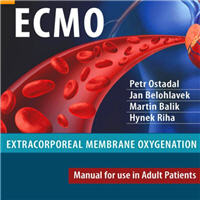Tag: antibiotics
Probiotics for the Prevention of Antibiotic-associated Diarrhea in Children
Antibiotic-associated diarrhea (AAD) occurs when antibiotics disturb the natural balance of "good" and "bad" bacteria in the intestinal tract causing harmful bacteria to multiply beyond their normal numbers. The symptoms... read more
Prophylactic Antibiotics After Cardiac Arrest?
This is a multicenter, double-blind, placebo-controlled trial of patients resuscitated from shockable out-of-hospital cardiac arrest. Patients were randomized to placebo versus intravenous amoxicillin-clavulanate for two... read more
Are Antibiotics for Sepsis in One Hour Feasible in the ED?
In this single-center study, implementation of sepsis protocols designed to expedite bundle delivery resulted in only a small fraction of patients receiving antibiotics within 1 hour of triage. This study validates the... read more
Biomarkers and Clinical Scores to Identify Patient Populations at Risk of Delayed Antibiotic Administration or Intensive Care Admission
Patients with low severity signs of infection but high MR-proADM concentrations had an increased likelihood of subsequent disease progression, delayed antibiotic administration or ICU admission. Appropriate triage decisions... read more
How Should We Treat Acinetobacter Pneumonia?
The optimal treatment for multidrug-resistant A. baumannii pneumonia has not been established. New therapeutic options are urgently needed. Well designed, randomized controlled trials must been conducted to comprehensively... read more
Optimizing Therapy of Bloodstream Infection Due to Extended-spectrum β-lactamase-producing Enterobacteriaceae
Carbapenems should be used in patients with serious infections; alternatives could be used individually, particularly for definitive treatment of patients with milder presentations. Meropenem and imipenem are the drugs... read more
ED Management of Smoke Inhalation Injury in Adults
When treating patients who have suffered injury in a fire, managing their airway is as critical as treating their burns. Following on the February 2018 issue on Thermal Burns, this issue reviews strategies for diagnosing... read more
Development and Assessment of Objective Surveillance Definitions for Nonventilator Hospital-Acquired Pneumonia
These findings suggest that objective surveillance for NV-HAP using electronically computable definitions that incorporate common clinical criteria is feasible and generates incidence, mortality, and adjusted ORs for hospital... read more
Corticosteroids for Children with Septic Arthritis
Researchers conducted a review of the effects of corticosteroids given in addition to antibiotics to children with septic arthritis. Evidence was sought until April 2018. After searching for all relevant studies, reviewers... read more
Procalcitonin-Guided Use of Antibiotics for Lower Respiratory Tract Infection
The provision of procalcitonin assay results, along with instructions on their interpretation, to emergency department and hospital-based clinicians did not result in less use of antibiotics than did usual care among patients... read more
Ineffectiveness of Procalcitonin-Guided Antibiotic Therapy in Severely Critically Ill Patients
Procalcitonin-guided (PCT) antibiotic therapy fails to decrease the mortality or length of stay (LOS) of critically ill patients with suspected or confirmed sepsis. PCT-guided cessation of antibiotic therapy could reduce... read more
Effect of a Sepsis Educational Intervention on Hospital Stay
Adherence to a bundle strategy is low following an educational intervention. However, when patients are managed after instruction in guideline recommendations, hospital stay may be significantly reduced. The main cause... read more
Sepsis Surveillance Using Adult Sepsis Events Simplified eSOFA Criteria Versus Sepsis-3 Sequential Organ Failure Assessment Criteria
Sepsis-3 defines organ dysfunction as an increase in the Sequential Organ Failure Assessment score by greater than or equal to 2 points. However, some Sequential Organ Failure Assessment score components are not routinely... read more
Speedy sepsis care slows in-hospital mortality
Sepsis and septic shock patients treated within 3 hours had lower in-hospital mortality rates than those treated between hours 3 and 12, based on data from nearly 50,000 adult patients. The findings were presented at an international... read more
Procalcitonin-Guided Antimicrobial Therapy in Critical Care
Procalcitonin guidance for antibiotic cessation improves short-term mortality in ICU patients. Previous meta-analyses showed that procalcitonin-guided antimicrobial management, compared with standard care, resulted in less... read more
Hospitals Delay Use Of New Antibiotics
According to a new study published in Diagnostic Microbiology and Infectious Disease, US hospitals on average waited more than a year to prescribe any of six new antibiotics approved by the US Food and Drug Administration... read more
Sepsis: Personalization vs. Protocolization?
The history of intensive care has been littered with too many false dawns. Old management dogma, now derided, have been replaced by new and equally resolute convictions, many of which will, in time, undoubtedly follow a similar... read more
Variation in Identifying Sepsis and Organ Dysfunction Using Administrative Versus Electronic Clinical Data and Impact on Hospital Outcome Comparisons
Variation in the accuracy of claims data for identifying sepsis and organ dysfunction limits their use for comparing hospitals' sepsis rates and outcomes. Using objective clinical data may facilitate more meaningful hospital... read more
How to Deal with Severe Acute Pancreatitis in the Critically Ill
Management of severe acute pancreatitis (SAP) is multimodal with emphasis on monitoring, adequate fluid resuscitation, avoiding prophylactic use of antibiotics, cause-directed procedures or treatment, and organ support. There... read more
New Approaches Reduces Inappropriate Antibiotic Usage
A UC Davis study of 9 emergency departments and urgent care centers in California and Colorado found educating physicians and patients about safe antibiotic use can cut overuse by 30%. The study, funded under a contract from... read more
Antibiotics for Sepsis
Antibiotics for Sepsis - Does Each Hour Really Count? Or is it Incestuous Amplification? - by Prof Mervyn Singer "Each hour's delay in initiating antibiotics costs lives" is a doctrine that has attained quasi religious status.... read more
Identifying At-Risk Patients for Sub-optimal Beta-lactam Exposure in Critically Ill Patients with Severe Infections
Conventional beta-lactam dosing is flawed in critically ill patients. Useful tools such as the MeroRisk Calculator need to be comprehensively evaluated clinically, and if successful should be added into clinical practice... read more









